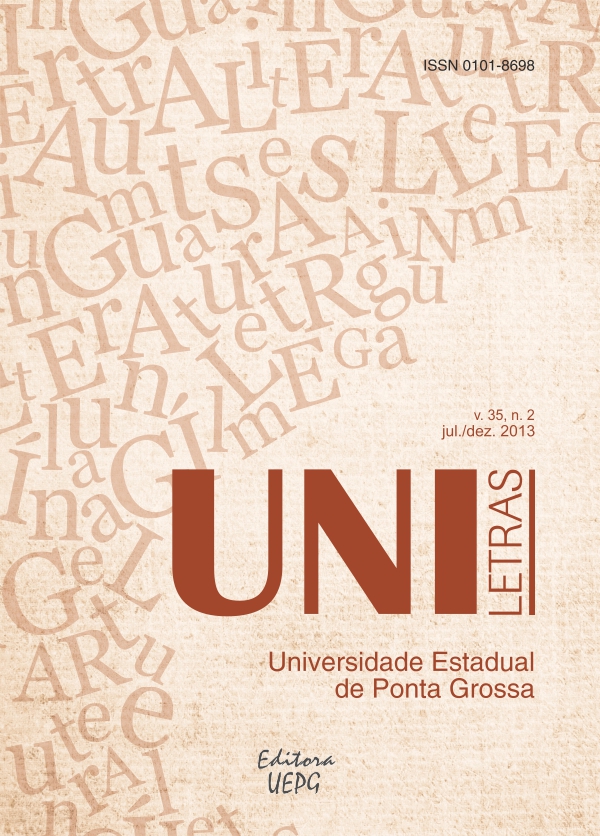CAIO FERNANDO ABREU E NOUVEAU ROMAN – NARRATIVA E DISCURSO E SUA LITERALIDADE EM ANÁLISE NO CONTO “PONTO DE FUGA”
DOI:
https://doi.org/10.5212/uniletras.v35i2.5266Palavras-chave:
Caio Fernando Abreu, Nouveau Roman, discurso, narrativaResumo
Este artigo apresenta uma análise do conto “Ponto de Fuga”, do escritor gaúcho Caio Fernando Abreu. Este é considerado um escritor da contracultura, geração “desbunde” dos anos 970/80 e também, numa visão mais politizada, como ícone gay da literatura brasileira. Sua obra estabeleceu diálogo com várias correntes literárias de seu tempo, tais como a Beat Generation e o Realismo Mágico Latino-americano, e importantes escritores como Julio Cortazar, Clarice Lispector e Carlos Drummond de Andrade. O conto em análise neste trabalho demonstra a presença do Nouveau Roman, experiência formal surgida na França no período do pós-guerra, que se posiciona contra as formas tradicionais de romance, considerando caducas as noções de personagem e história. Para execução da análise do conto foram utilizados os pressupostos teóricos da Narratologia, da Análise do Discurso e da Pragmática.
Downloads
Downloads
Publicado
Edição
Seção
Licença
Autores que publicam nesta revista concordam com os seguintes termos:
a) Os autores mantém os direitos autorais e concedem à revista o direito de primeira publicação, com o trabalho simultaneamente licenciado sob a Creative Commons Attribution License que permite o compartilhamento do trabalho com reconhecimento da sua autoria e publicação inicial nesta revista.
b) Esta revista oferece acesso livre imediato ao seu conteúdo, seguindo o princípio de que disponibilizar gratuitamente o conhecimento científico ao público proporciona maior democratização mundial do conhecimento. Para maiores informações sobre esta abordagem, visite Public Knowledge Project, projeto que desenvolveu este sistema para melhorar a qualidade acadêmica e pública da pesquisa, distribuindo o OJS assim como outros softwares de apoio ao sistema de publicação de acesso público a fontes acadêmicas. Os nomes e endereços de e-mail neste site serão usados exclusivamente para os propósitos da revista, não estando disponíveis para outros fins.

This work is licensed under a Creative Commons Attribution 4.0 International License.





